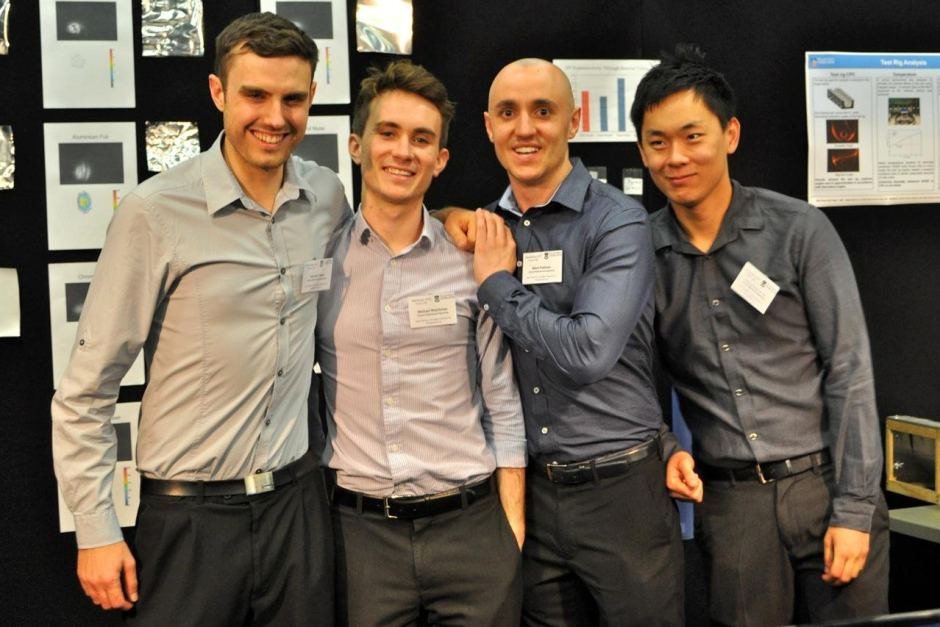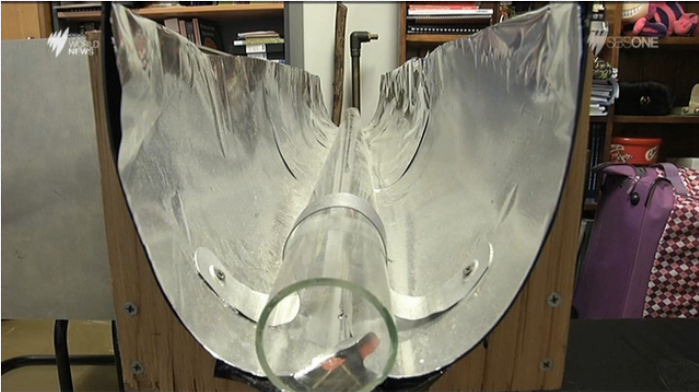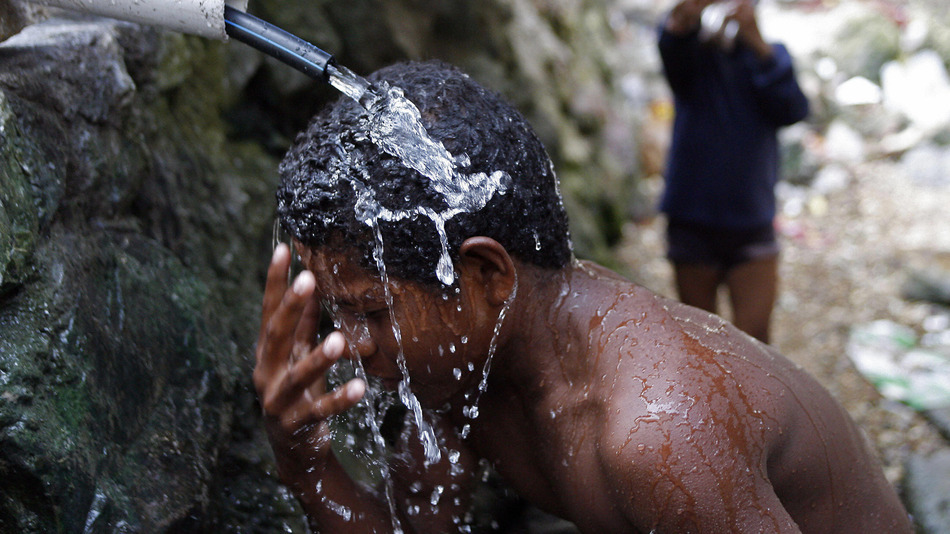A Group Of Engineers Create Life-Saving Water Purifier Using Empty Foil Chip Packets
Armed with plywood, a glass tube and some empty chip packets, mechanical engineering students from the University of Adelaide have developed a low-cost water purification system capable of killing off harmful bacteria.
Meet Harrison Evans, Michael Watchman, Mark Padovan and Anthony Liew. They're from the School of Mechanical Engineering at the University of Adelaide, and have designed a water purifier that can be created using a glass tube and a metal chip packet.
A group of Australian engineering students created a potentially life-saving water treatment system using a glass tube and a metal chip packet.
They designed a system that uses UV(A) radiation from the sun to generate oxygen radicals in the water, actively killing the pathogens. They did it under the direction of engineers Dr. Cris Birzer, Dr. Peter Kalt and scientist Dr. Connor Thomas.
Dr Cris Birzer, an engineering lecturer, said he hoped the University of Adelaide students had come up with a way to achieve a big health improvement for a small outlay. "The final design is effectively half a cylinder of reflective material and all the light that hits that reflective material is directed at a glass tube, which is about a metre-and-a-half long," he said.
abc.net.au"Inside that glass tube we just have water that's flowing at a fairly slow rate and a particular part of the sunlight spectrum, the UV-A radiation, goes into the water and reacts with the water to produce oxygen radicals and these then kill the pathogens."
islandsbusiness.comDeveloped in collaboration with ChildFund Australia, an organization dedicated to promoting children's rights across the globe, one of the team's main design focus was to provide a solution that could easily be adapted by local communities in PNG
The water runs through a piece of piping, which rests in a trench-shaped structure coated in reflective metal
Image via gizmag.comAs such, it was critical that the materials were both cheap, light and accessible. "Our priority was to develop a system with, and not just for, the end-users," says Dr Cristian Birzer, lecturer at the School of Mechanical Engineering and supervisor of the project. "We wanted something where we could provide design guidelines and let the local communities build and install their own systems using readily available materials that could be easily maintained and replaced."
As a starting point, the students built a system using high quality materials. The water runs through a piece of piping, which rests in a trench-shaped structure coated in reflective metal. This material directs the sunlight onto the water, harnessing its UVA radiation to kill off pathogens. They then replicated this model with the plywood, glass tube and high-density polyethylene plastic sheeting coated in the chip packet wrapping, shaped to capture the maximum amount of sunlight and direct it onto the water running through the glass tube.
dailymail.co.ukThe students found that the rudimentary version worked just as well as the high-quality one, and was a very cost-effective solution at AU$67 (US$60). In testing, the system was able to reduce high amounts of E-coli to undetectable levels in under 30 minutes. "The system can successfully treat close to 40 liters (10.5 gal) in four hours and the beauty is that it's designed to be modular, so more modules can be added for greater quantities of water," says Dr Birzer.
Because the final design is something that anyone can make (as it's just a concept), the university is not giving a product, but the design itself so that anyone can make and therefore they own it
"The system can successfully treat close to 40 litres in four hours and the beauty is that it's designed to be modular, so more modules can be added for greater quantities of water." The cost of a simple device is estimated at $67, which Mr Fenech said was a crucial advantage.
abc.net.au"Things in Papua New Guinea are quite expensive," he said. "When you live in a rural community and you're cut off from the main economy, the idea of having low-cost solutions to problems such as poor access to clean water, that's very, very important. ChildFund is a big fan of any ideas that keep costs down." The design has been supplied to ChildFund for it to conduct the trials in PNG.
islandsbusiness.com"We're very, very excited about the potential it shows and we're looking forward to some results come out of it," Mr Fenech said. The developers and support agency said they were keen to eventually roll out the concept to rural communities across PNG. The project recently won the students an environmental engineering award from the Sustainable Engineering Society.
abc.net.auGlobally, 780 million people have no access to purified water, and an estimated 1.5 million deaths occur due to polluted water annually. In Papua New Guinea, it claims the lives of 900 children.
Motuan boy Kor Guba takes a shower in the street because of the lack of running water in the traditional stilt houses in Hanuabada village near Port Moresby, 16 August 2007.
Image via mshcdn.comThe purification project is now getting international interest, from places such as Brazil, Philippines and Thailand, Birzer said. He believes this is just the beginning.
The team is looking at designing cookstoves to save people who die from emissions from burning dung and wood; bio-digesting toilets as more people have access to mobile phones over functioning toilets; and guidelines for wind power generation systems made from scrap for people who do not have access to electricity or reliable electricity.




